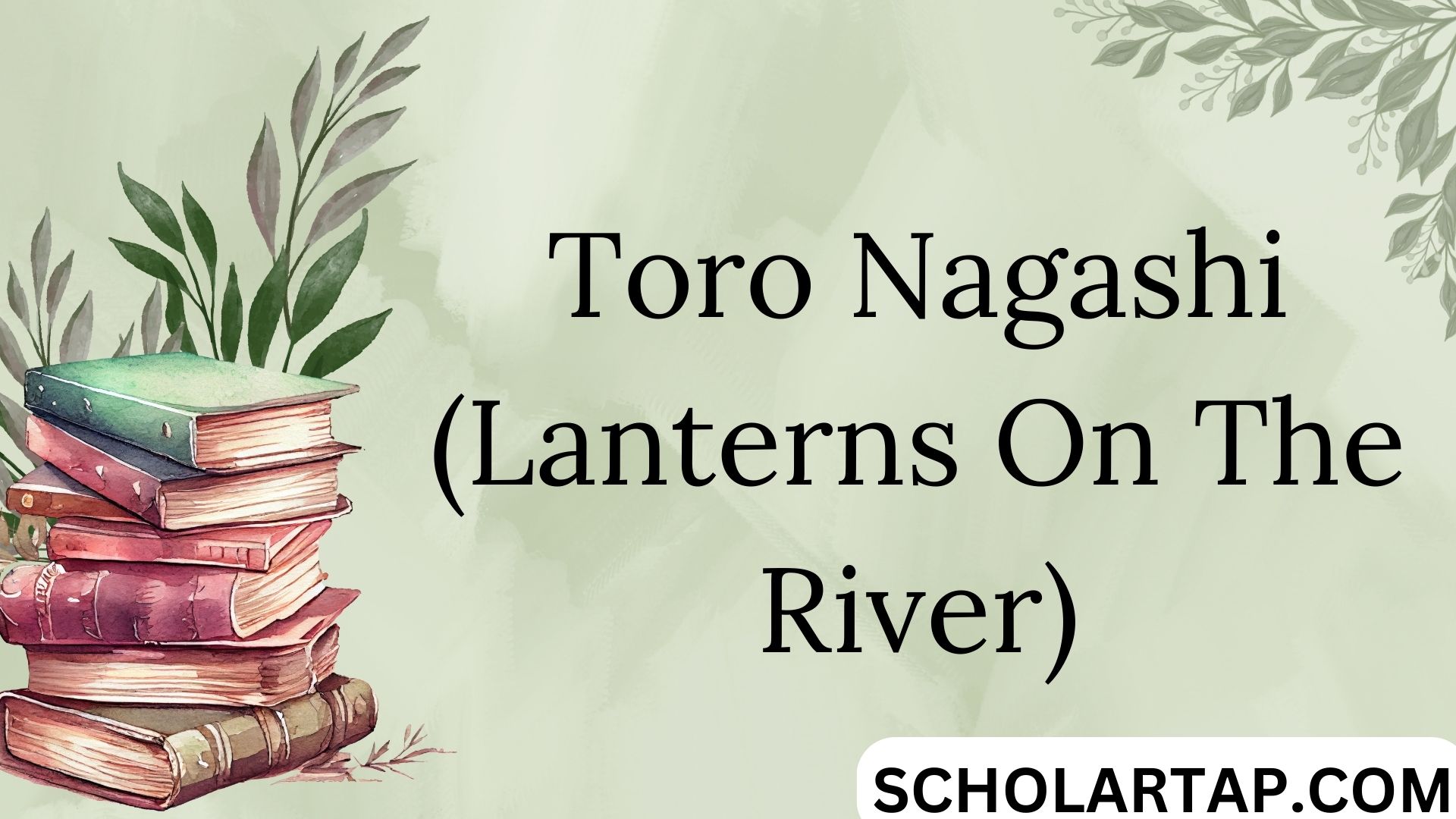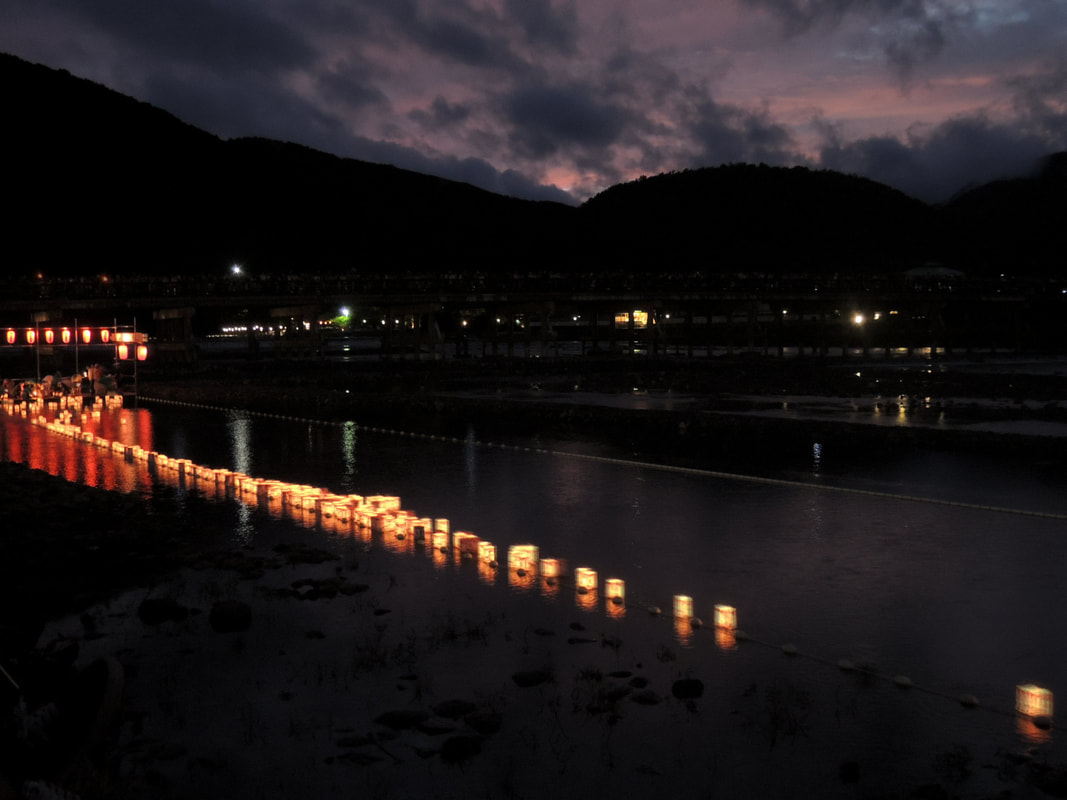
Toro Nagashi is a Japanese festival during which glowing paper lanterns are set afloat on rivers, symbolizing the peaceful journey of ancestors’ spirits. Celebrated annually at the end of the Obon festival, Toro Nagashi is most enchanting along the Kamo River in Kyoto, where thousands of lanterns glide along the water, creating a mesmerizing display of light. This ceremony is a time for honoring the souls of the departed, fostering a sense of spiritual connection, and embracing the natural beauty of Kyoto’s riverside.
History of Toro Nagashi: A Timeless Tradition

The origins of Toro Nagashi date back centuries, intertwined with Japan’s Buddhist traditions and beliefs surrounding the soul’s journey. The word “Toro” means “lantern,” and “Nagashi” means “to flow.” The festival is part of the Obon season (celebrated in mid-August), during which Japanese families honor their ancestors and commemorate the spirits of the deceased, believed to return to the earthly realm during this time. Toro Nagashi is the ceremonial farewell, guiding these spirits back to the afterlife with the gentle light of floating lanterns.
Significance of Toro Nagashi: Honoring Life and Memory
Toro Nagashi is a serene and respectful practice that allows participants to reflect on life, family, and ancestral connections. In Kyoto, the festival holds a particular cultural and spiritual resonance, providing an opportunity for residents and visitors alike to observe Japan’s deep respect for nature, ancestors, and the transient beauty of life. Each lantern symbolizes gratitude, memory, and a peaceful farewell to loved ones who have passed on.
Toro Nagashi in Kyoto: An Enchanting Setting
Kyoto, known for its rich history and traditional festivals, provides an ideal setting for Toro Nagashi. The Kamo River is a symbolic location, as Kyoto’s rivers and temples have long been associated with spiritual ceremonies. During the festival, the river becomes a floating sea of lanterns, glowing warmly against the night sky. Participants inscribe messages, prayers, or the names of loved ones on the lanterns, making the ceremony deeply personal and meaningful.
The Rituals of Toro Nagashi
1. Preparation of the Lanterns
- Each lantern used in Toro Nagashi is typically made of delicate washi paper, often set within a bamboo or wooden frame. These lanterns are crafted in simple, rectangular shapes and adorned with symbols of peace, prayer, and remembrance.
- Participants write messages, wishes, or prayers on the lanterns, filling them with personal significance before releasing them onto the river.
2. The Lantern Release Ceremony
- The lantern release is the heart of Toro Nagashi. Participants gather along the riverbank, where each lantern is gently lowered onto the water. As lanterns begin to drift along the river’s current, a serene, almost ethereal atmosphere takes hold.
- Monks and temple representatives often lead a short blessing or prayer before the release, honoring the spirits and invoking peace and goodwill.
3. Music and Meditation
- Traditional Japanese music and chanting often accompany the ceremony, adding a peaceful auditory element to the visual beauty of the floating lanterns. The melodies of the flute and taiko drums echo softly, creating a meditative ambiance that enhances the reflective nature of the event.
Attending Toro Nagashi in Kyoto: Tips for an Unforgettable Experience
For visitors looking to attend Toro Nagashi in Kyoto, here are a few helpful tips to ensure a memorable and respectful experience:
- Arrive Early: Toro Nagashi attracts both locals and tourists, and the best viewing spots along the Kamo River fill up quickly. Arriving early allows you to secure a good spot and take in the river’s atmosphere before the lanterns are released.
- Embrace the Quiet Atmosphere: The ceremony is one of contemplation and respect. Avoid loud conversations or disturbances, and join in the reflective spirit by observing quietly and taking in the beauty of the moment.
- Participate Respectfully: Some events allow visitors to purchase or decorate their lanterns to float on the river. If you’re participating, write a respectful message or prayer for peace and prosperity, honoring the tradition of remembrance.
Why Visit Toro Nagashi in Kyoto?
Attending Toro Nagashi is more than a visual experience; it’s a chance to witness and be part of a significant Japanese tradition. The festival showcases Kyoto’s harmony with nature, blending the quiet beauty of the lantern-lit river with a sense of spiritual reverence. It’s an opportunity to appreciate the philosophy of mono no aware (物の哀れ), a Japanese concept that acknowledges the beauty of transient moments, making Toro Nagashi a powerful reminder of life’s impermanence and the importance of memory.
Environmental Impact and Sustainability Efforts
In recent years, Kyoto’s Toro Nagashi organizers have implemented sustainability practices to reduce environmental impact. Lanterns are made from biodegradable materials and collected at the end of the ceremony to prevent waste. These efforts are part of Japan’s larger commitment to protecting natural spaces, ensuring that the beauty of Toro Nagashi remains in harmony with the surrounding environment.
Other Famous Toro Nagashi Festivals in Japan
While Kyoto’s Toro Nagashi on the Kamo River is one of the most famous, similar festivals are held across Japan, each with unique regional elements:
- Tokyo’s Sumida River Toro Nagashi: Held along the Sumida River, this version of the festival takes place near the iconic Tokyo Skytree, creating a stunning blend of traditional and modern backdrops.
- Hiroshima Toro Nagashi: Held on August 6 to commemorate those who lost their lives in the Hiroshima atomic bombing, this event is a solemn remembrance and call for peace.
- Nagoya’s Osu Kannon Temple Toro Nagashi: This festival is unique in that it takes place in a more urban setting, but retains the calm and reflective nature of traditional Toro Nagashi.
Conclusion: Embrace the Serene Beauty of Toro Nagashi
Toro Nagashi is more than just a festival; it’s an expression of gratitude, remembrance, and beauty in one of Japan’s most historic cities. The sight of hundreds of floating lanterns on Kyoto’s Kamo River is a breathtaking experience, allowing participants to connect with Japan’s cultural heritage and take part in a timeless expression of respect for ancestors. As you join in the ceremony, you’ll find yourself moved by the spiritual tranquility and profound symbolism of each lantern as it drifts downstream, lighting the way for the spirits of the past and symbolizing hope for the future. Whether you’re seeking cultural immersion or personal reflection, Toro Nagashi in Kyoto is an unforgettable journey of peace and memory.
Leave a Reply